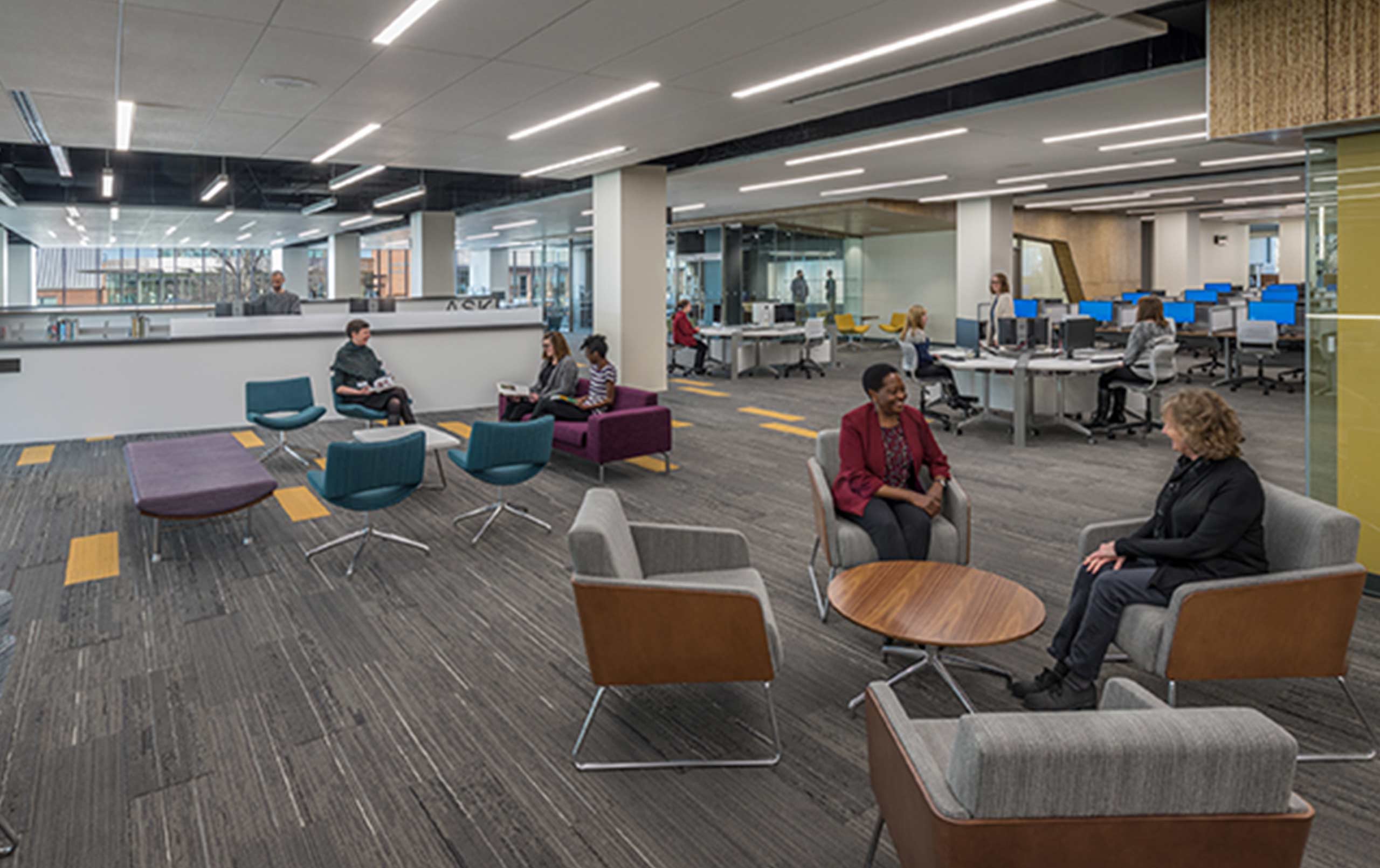
Innovations Conference forum investigates community college library paradigm shift from quiet study space to enticing destination, highlights Harper College’s library renovation
When he designed the iconic Phillips Exeter Academy Library (Exeter, New Hampshire) in the mid-1960s, renowned architect Louis Kahn had a concept: “A man with a book goes to the light. A library begins that way.”
Fifty years later, the way that students absorb information and what they want from a library have changed drastically. However, many academic libraries, with their dark interiors and row after row of tall shelves, remain stuck in an era that no longer appeals to students.
Considering technological advances and the current student mindset, Jeffrey Sronkoski, principal and director of higher education at Legat Architects, proposes a slight modification of Kahn’s maxim—Sronkoski advises, “Go to the light to connect and create.”
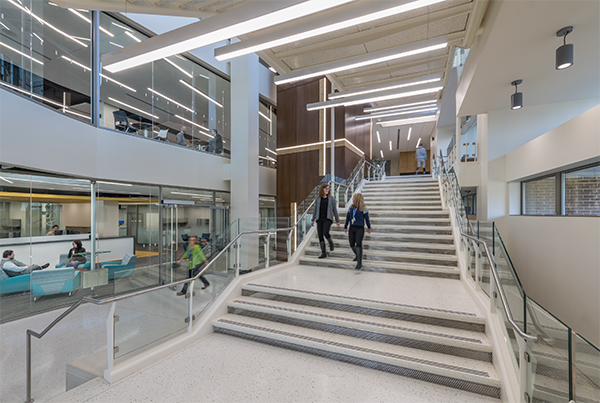
Harper College and Legat Architects will delve into this new model at The League for Innovation in the Community College’s Innovations Conference. Sronkoski will join Brian Knetl, associate provost for interdisciplinary student success at Harper, and Sylvia Kowalk, principal and director of interior design at Legat, to present “From Content Consumption to Content Creation: Harper College’s Library Transformation.”
The trio will discuss the academic library paradigm shift and the “third place concept,” which posits the student’s need for a third place on campus. The panel will also reveal how these ideas inspired the recently completed 107,000-square-foot library renovation at Harper College, which celebrates its 50th anniversary this year.
According to The League for Innovation in the Community College, “Innovations is the premier event for professionals dedicated to improving organizational teaching and learning, and discovering new approaches for enhancing the community college experience.”
The Innovations Conference takes place March 18 – 21 in National Harbor, Maryland. Knetl, Kowalk, and Sronkoski present from 4:15 p.m. to 5:15 p.m. on Monday, March 19.
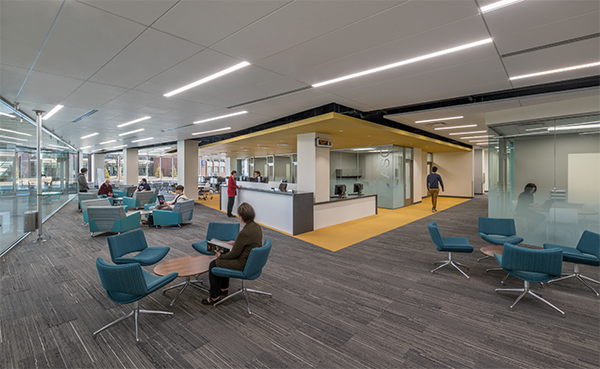
A Shift in Spatial Focus
Traditionally, libraries have measured their impact by the number of volumes in circulation and how many people pass through the turnstile. Thus, many people cut their academic teeth in dark libraries crammed with imposing shelves meant to get as many books per square foot as possible.
Today, however, when it comes to measuring a library’s impact, the lines have blurred, according to Sronkoski. Print and audio collections are declining. Collection volume and user count take a back seat to teaching students to use digital and research tools.
.
Sronkoski said, “In the traditional library, everyone gravitated toward the reading room. Now, the open, light-filled feel of that reading room should set the tone for the entire library. The spatial focus has shifted from books to people.”
Thus, to walk through Harper’s renewed library is to experience a borderless hub of discovery and activity. Glass walls and low shelves allow natural light and views to penetrate the entire lower, more active floor of the library.
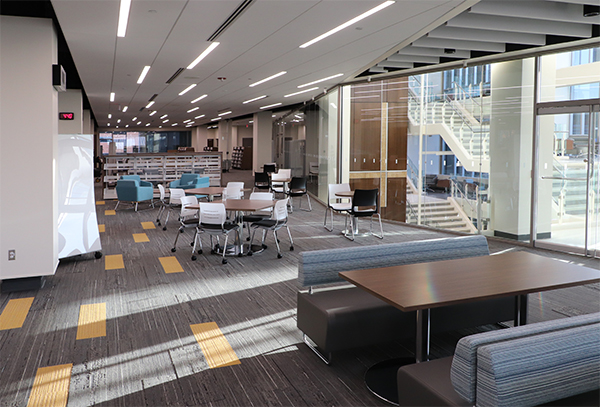
The End of Shush?
Many people have an image, partly inspired by movies and books, of the typical librarian: a stern individual (often wearing eyeglass chains) reproaching patrons with “shhhhh!” at the slightest noise. Today’s library leaders, however, are technology and resource specialists focused on helping students navigate the complex tapestry of information.
Sronkoski argues that the new wave of library design is doing away with shushing. “During the pre-Internet age, the core purpose of libraries was content consumption,” he said. “Now, it’s the creation of content . . . and that means discussion and collaboration. You don’t need to go to the library to find a book, but rather to connect socially or on-line and create.”
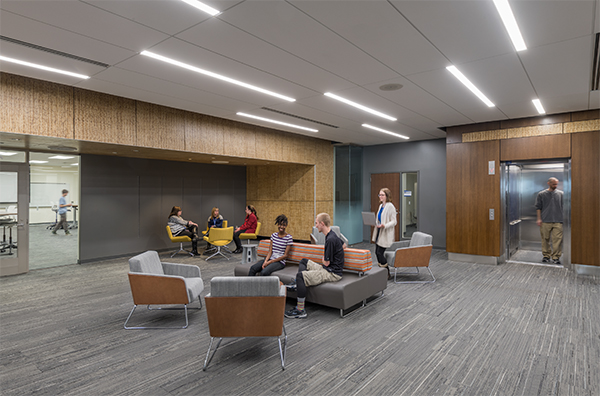
The makeover of Harper College’s library prioritized such spaces that support collaboration and innovation. “Makerspaces” include a content creation lab with 3D printers and audiovisual recording studios. Moreover, lounge-like social spaces with bright, welcoming furniture exist amid shorter shelves and help desks to promote collaboration.
Whereas the lower floor of Harper’s revived library is the main active space, the upper floor offers a more traditional setting with higher stacks. Nevertheless, that upper floor still provides an open, light-filled place for smaller study groups to gather.
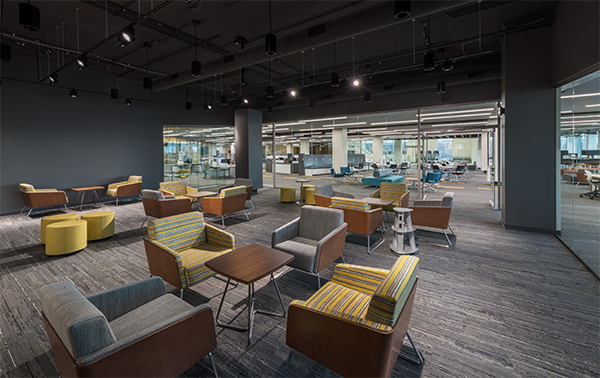
The Third Place
Sociologist Ray Oldenburg coined the term “third place” in his book, The Great Good Place. He explained that the first place is our home where we live. The second place is where we work. And the third place is a public setting for informal gatherings and relaxation. He explained the differences between the three places in our lives, and made the case for the importance of the third, whose characteristics range from stimulating conversation to a playful mood.
This concept drove the Harper College library renovation, but the formula was slightly different—the first place is the student’s home, the second is the classroom, and the third is the library.
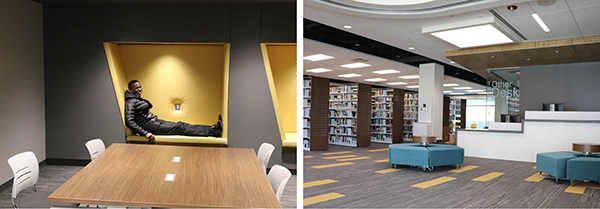
“Oldenburg’s ideas brought a new benchmark as we engaged stakeholders during the planning and design process at Harper,” said Sronkoski. “The result is that the idea of a third place on campus advances the college mission, keeps students on campus, and helps them succeed.”
Contact us to learn more about academic library design, or comment below to share your thoughts on this post.


